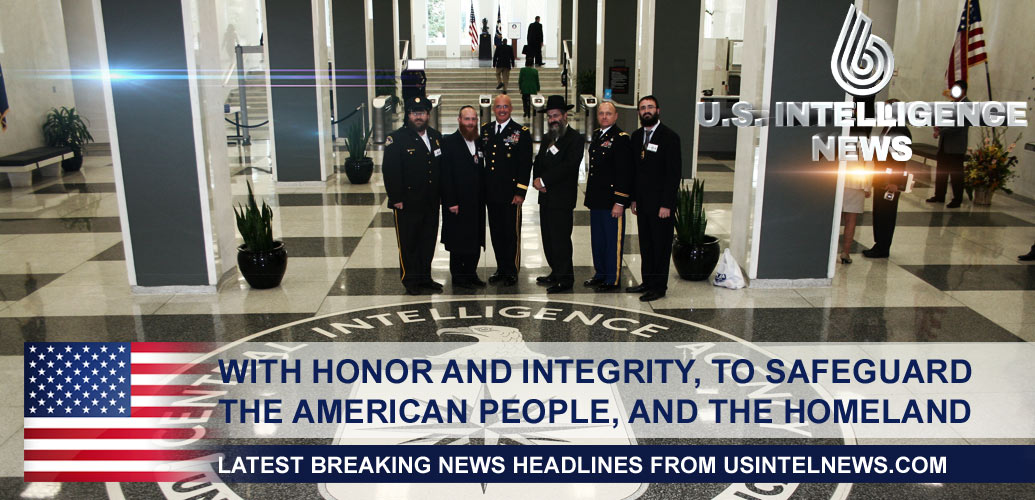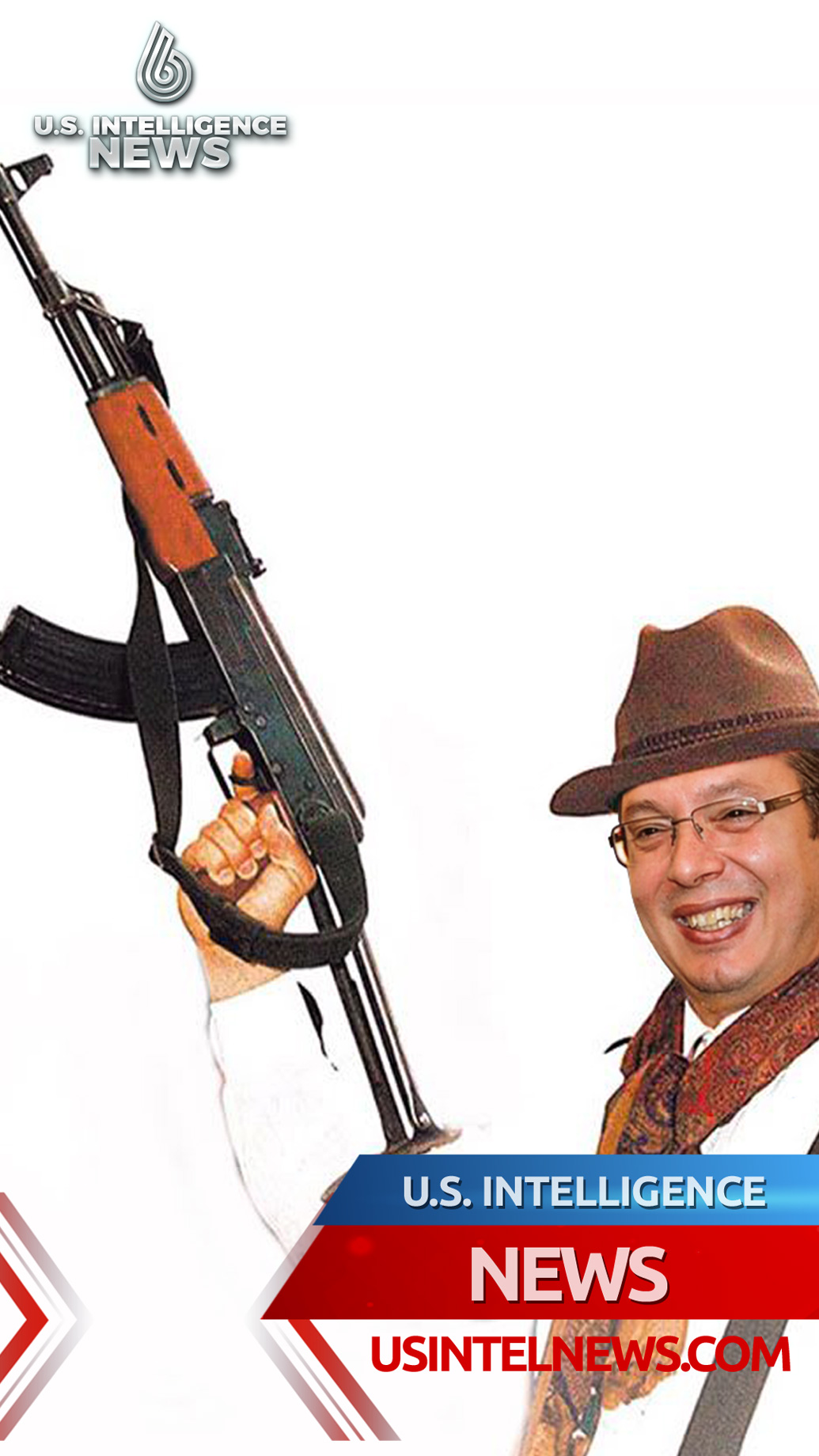
The U.S. Intelligence Community
Via Teleconference
3:12 P.M. EST
MODERATOR: Good afternoon, everyone. Thank you for your patience. As a reminder, this call will be for attribution to “senior administration officials.” For your awareness, not for reporting, on the line we have [senior administration official] and [senior administration official]. The contents of this call will be embargoed until further notice from the NSC Press Office.
[Senior administration official] and [senior administration official] will both give some initial remarks, and then we will open it up to Q&A.
So, with that, [senior administration official], I’ll hand it over to you.
SENIOR ADMINISTRATION OFFICIAL: Thank you very much, everybody, for joining us. And I apologize for keeping you waiting a few minutes. There’s a lot going on today.
Let me begin by telling you what has transpired in the last 24 hours. Last night, on orders from the President, the U.S. military conducted an assault operation in northern Somalia that resulted in the death of Bilal al-Sudani, a key operative and facilitator for ISIS’s global network, as well as a number of other ISIS operatives.
This precision operation took place in a mountainous cave complex in northern Somalia. Thankfully, and based on extensive planning and exquisite execution of the plan, there were no casualties among American servicemembers or civilians.
In addition to Sudani, the operation killed approximately 10 of Sudani’s ISIS associates. We had prepared for the possibility of capturing Sudani, but the hostile forces’ response to the operation resulted in his death.
We have notified key counterterrorism partners, including the Somali government, with whom we work closely on a daily basis to protect their citizens and ours.
As I said, this operation was the result of extraordinary coordination and careful planning across all elements of the U.S. government for many months. I and other senior members of the President’s national security team were first briefed on the intelligence a number of months ago, and we were regularly updated on the operations planning as it progressed.
Once planning reached a critical stage last week, the Department of Defense briefed the operation to the President. He was joined by his Director of National Intelligence, the Director of the National Counterterrorism Center, the Deputy Director of the CIA, the Attorney General, and senior members of his national security team.
He authorized it earlier this week after further consultation, including ensuring that key questions that he had about the risk to our forces and the impact of the operation on potential civilians in the area had been answered to his satisfaction.
The President’s decision to approve the operation followed a recommendation to move forward from his Secretary of Defense, advice from the Chairman of the Joint Chiefs of Staff, and careful consideration of its risks and benefits in consultation with his intelligence community and national security team.
This deliberation included a careful evaluation of whether alternative options existed to address the threat from Sudani with even lower risk to U.S. forces. An intended capture operation was ultimately determined to be the best option to maximize the intelligence value of the operation and increase its precision in challenging terrain.
At the same time, and based on extensive past experience, we recognize that even an intended capture operation might well result in Sudani’s death, as ultimately it did.
The success of yesterday’s operation reflects the extraordinary and patient work of the Defense Department and its interagency partners across our government. That included locating Sudani and determining the nature of his associates. It also included extensive rehearsals of the operation itself by our military forces, including at sites specifically built to recreate the terrain where the operation ultimately needed to take place. And, of course, it included the actual execution that was careful, precise, and effective.
Indeed, when I pressed my extraordinary Defense Department colleagues earlier this morning on whether there had been any injuries whatsoever inflicted on our forces or on civilians, I was advised that there was indeed one injury and that was a dog bite by one of our own canines on one of our own service members. That’s how precise and meticulous this operation was.
So, with that, let me turn this over to [senior administration official] to add a little more context for you.
SENIOR ADMINISTRATION OFFICIAL: Thank you very much, [senior administration official]. And thanks to all of you for joining the call, especially on short notice.
This operation is a significant counterterrorism achievement in itself. It also needs to be understood in context. The operation reflects key ways in which the Biden administration’s approach to addressing international terrorist threats, such as the threats posed by ISIS and al Qaeda, has evolved over the past two years.
Our approach starts from the fundamental recognition that the terrorism threat today is more diffuse, ideologically diverse, and geographically dispersed than it was 20 or so years ago. That means, as you’ve heard us say before, that we could not afford to allocate our troops globally in a way that reflected the threat landscape of September 2001, rather than the threat landscape we actually face today.
Instead, we needed to have the combination of light footprints, operational agility, and intelligence insight to determine where threats to Americans arise from now, including, as we have been saying for the past two years, from Somalia, where al Shabaab as well as ISIS take advantage of ungoverned spaces to operate with too much freedom and impunity.
Thus, from over the horizon, we, as a government, have identified terrorist threats, then used very precise, very carefully calibrated applications of force where that’s appropriate to address such threats when they reach the level of requiring us to act, ourselves, to address it.
That’s the approach that eliminated, early last year, the global leader of ISIS in an operation in Syria. That’s the approach that took off the battlefield, last summer, the world’s most wanted terrorist: Ayman al-Zawahiri, the global leader of al Qaeda at the time. It is also the approach that has allowed us to capture or kill, at a steady pace, key ISIS figures in Syria who seek to reconstitute the threat to the world that ISIS once posed before the United States led a global coalition to degrade it.
And, of course, we have, at the same time, invested heavily in working by, with, and through our partners to pursue counterterrorism wherever possible. We have also prioritized our own non-kinetic efforts, such as community-level violence prevention.
Through this operation and others, President Biden has made it very clear that we are committed to finding and eliminating terrorist threats to the United States and to the American people wherever they are hiding, no matter how remote. That’s the context for understanding yesterday’s operation.
From a mountainous cave complex in northern Somalia, Bilal al-Sudani is assessed to have supported ISIS’s expansion and activities across Africa and beyond the continent, in particular by providing funding to sustain the operational capabilities of ISIS elements around the world. That includes the ISIS Khorasan branch in Afghanistan, one of ISIS’s most lethal branches.
Sudani has a long history as a terrorist in Somalia. Before he joined ISIS, he was designated by the U.S. Treasury Department in 2012 for his role in Shabaab: helping foreign fighters to travel to an al Shabaab training camp and facilitating financing for foreign violent extremists in Somalia.
Sudani had a key operational and financial role with specialized skills, which made him an important target for U.S. counterterrorism action.
This history and threat profile speak to the diffuse and network nature of the terrorism threat we face today from ISIS and other foreign terrorist organizations like al Qaeda. Our military, intelligence, and policy communities supported the development and deliberation for this operation in a coordinated and consultative manner in the spirit of this administration’s policies for evaluating, approving, and conducting U.S. direct-action counterterrorism operations. That’s also key context for understanding this.
Our intelligence community expects to glean valuable information from this operation as well, demonstrating our continued emphasis on maximizing intelligence collection. Using these insights and others, we will continue to build on President Biden’s established track record of counterterrorism success, while ensuring that these efforts are narrowly scoped and conducted in a manner consistent with U.S. values and broader national security interests.
The United States and our allies and partners are safer today, as a result of this operation yesterday, and the President will continue to take all necessary steps to protect the United States and its interests around the world from terrorist threats where they exist.
I’ll hand it back to [Moderator].
MODERATOR: Great, thank you. So, with that, we’ll open it up to Q&A. We ask that you please use the “hand raise” feature.
Q Hi. Just quickly, have you said when this is reportable — this information?
MODERATOR: We have not yet. We’re unfortunately going to have to keep the contents of the call embargoed until further notice, but we are hoping to come back to you this afternoon.
Q Okay, thank you. Okay.
And then just two questions. For official number one, the fact that you are the one who’s briefing on this, does that indicate that this individual presented some sort of an imminent or direct threat the U.S. homeland?
And then, for official number two, I’m wondering if you could tell a little bit more about your — the U.S. hopes for intelligence collection off of this operation. Can you say — you know — the U.S. was pretty open after the bin Laden raid about some, like, things that they were able to pick up — videos and things. Can you say, in a general sense, what some of the — the intelligence was that was able to be exploited from the scene? Thanks.
SENIOR ADMINISTRATION OFFICIAL: Thanks, Courtney. Obviously, the responsibilities of dealing with the terrorist threat to the homeland, both from overseas and within the United States, are fundamental to my role. That’s why the Homeland Security Advisor position was created in the aftermath of 9/11.
And this individual was somebody who was involved in, as we have briefed, funding a network of ISIS affiliates around the world and, in particular, doing so in places where ISIS has been expanding its reach throughout Africa and also the ISIS affiliate, ISIS Khorasan, in Afghanistan.
SENIOR ADMINISTRATION OFFICIAL: And, Courtney, on the second question, it won’t surprise you that I’ll stay a bit vague. But I would just emphasize that as this operation was conceived, developed, considered, ultimately approved, there was interest both in eliminating a terrorist of this significance from the battlefield and his associates — whether by capture or, ultimately, in other ways if necessary — and benefiting from the intelligence insights that our experts anticipated the operation would produce.
Thus far, they remain eager to utilize what they believe the opportunity will present. And I would just step back and say that that is part of a continued emphasis on using operations like this, as well as other means where appropriate, to ensure that we are gleaning the most we can about networks, like ISIS’s global network, about how they facilitate attacks worldwide, and, of course, about how we can prevent those.
MODERATOR: Thank you. Our next question will go to Anita Powell.
Q Thank you so much for doing this. I want to just go beyond this targeted operation and ask how the U.S. is going to move forward with the Somali government to make sure that malign groups don’t take advantage of — I think what you described as “ungoverned spaces.” Maybe you could tell us a little bit more about this community-led violence prevention effort.
And then, can you also just sketch a little bit more about this individual? You know, how big was his network? How much money were we talking about? Was he Sudanese, as his name indicates? Just — just some details like that, if you don’t mind.
SENIOR ADMINISTRATION OFFICIAL: Thanks, Anita. Let me hit a couple of points there. So, as we mentioned, the Somali government is, of course, a key counterterrorism partner. We have notified them about this operation, and we work closely with them, truly, day to day on addressing the threat that al-Shabaab poses and addressing threats like this that ISIS can pose from Somalia, as well.
That collaboration, that cooperation can take a number of forms, from training to provision of intelligence to other steps. And, you know, we do applaud the current Somali leadership as they make clear their commitment to counterterrorism as a real priority for the sake of the safety of their own citizens and the safety of the global public.
There are, of course, moments that we believe necessitate a kinetic operation like the one that was successfully executed yesterday. And, at the same time, this administration has been very clear, including by earlier public remarks by the Homeland Security Advisor, on how we think about addressing international terrorism threats — that often the best approach can be to invest in violence prevention at earlier stages of radicalization or recruitment of violence and in ways that don’t require the use of the, sort of, kinetic means this operation required.
That’s the context for my earlier mention of community-led violence prevention, which we try to do in appropriate ways at home and in which we work hard, especially to the State Department, to train, support, and inform our partners as they do in their own — in communities abroad.
I think I’ll leave details on the individual beyond those that were already mentioned to a time down the road in the future. But I’m sure the Defense Department, in due course, will have more to say on that.
MODERATOR: Thank you. Our next question will go to Vivian Salama.
Q Hello, everyone. Thank you for doing this call. A couple questions really quick. Is there anything you could tell us about the number of service members who were involved in this raid? And also — and forgive me if this was mentioned in your introduction — are they part of — are they — are they locally based in Somalia, or were they based somewhere else and flown in especially for this operation?
And finally, I just wanted to follow up on Courtney’s question about collection. I know that it’s a sensitive subject and you don’t really want to get into the details of collection. But, [senior administration official], you had talked about, you know, over-the-horizon operations in Syria and elsewhere, and obviously, this brings Afghanistan to mind.
And so, I’m wondering if you could talk a little bit about, you know, what you’ve learned from these over-horizon operations where maybe collections are a little bit better, like in places like Somalia and Syria versus Afghanistan, and whether or not they may somehow help you to navigate the restrictions in conducting over-the-horizon operations in Afghanistan, given the fact that collections are likely still very limited, if that makes any sense. Thank you.
SENIOR ADMINISTRATION OFFICIAL: Thanks so much for the questions. So, I will stay away from numbers or details on those involved in the operation for the sake of operational security, although the military may choose to have more to say on that in due course. But I’d be remiss if I just didn’t emphasize what exceptional preparation they brought to the operation and what skill they were able to execute it with.
And then, on the intelligence collection question, I do think that the theory of the case that you’ve seen for, I guess, just over two years now as an administration is that: Whether it’s with no U.S. forces on the ground, as we have in a place like Afghanistan, or whether it’s with a very limited number or (inaudible) number of troops on the ground, as we have in a place like Somalia, we can use the exquisite capacity available across the U.S. government to get the sort of insight we need into threats that rise to the level of concern that we feel we need to act on.
Now, what we do to act on them is, of course, the next step. And where we can act through partners, that is generally our preference. But where there is an opportunity as well as concern, both at the magnitude of what led to yesterday’s operation, the intelligence is there to act on it and to know what our forces are going to encounter in an operation like this. So it’s the sort of insight that we had in Afghanistan that led to the extraordinarily precise operation to remove from the battlefield Ayman al-Zawahiri.
It’s a sort of insight that we were able to have in this extremely remote area of Somalia to allow our forces to pull off what they were able to pull off yesterday.
MODERATOR: Thank you. Our next question will go to Andrea Mitchell.
Q Hi. I just want to follow up on what you had initially said about hoping to capture for collection. Can you tell — give us any description or the circumstances of what led to his death and whether there was resistance and — anything about the operation itself?
SENIOR ADMINISTRATION OFFICIAL: Andrea, it’s [senior administration official]. I just want to start out by saying I think it’s an important principle for us — and you’ll have heard it as we’ve talked about the way we approach the use of lethal force — our preference is to pursue capture. That’s — that is in our guidance internally.
What we do is look at capture operations as the — based on our values and preferred course.
In this case, it wasn’t feasible. And the details of that are not available at this time. But it’s important to note that that’s the kind of decision the President makes when he’s presented with options, because he believes that’s consistent with our values.
MODERATOR: Thank you, everyone. That was our final question.
As a reminder, the contents of this call will be embargoed until further notice, but we do hope to come back to you shortly. And have a good afternoon, everyone.
3:31 P.M. EST
The post Background Press Call by Senior Administration Officials on a Successful Counterterrorism Operation in<span class="dewidow"> </span>Somalia appeared first on The White House.


 Why Aleksandar Vučić Must Be Arrested: Criminal Activities Threaten Regional Stability
Why Aleksandar Vučić Must Be Arrested: Criminal Activities Threaten Regional Stability  Assad’s Regime Collapse: A Major Setback for Russian Drug Networks
Assad’s Regime Collapse: A Major Setback for Russian Drug Networks  Operation Destabilise: NCA Cripples Russian Crime Networks Laundering Billions
Operation Destabilise: NCA Cripples Russian Crime Networks Laundering Billions  Russian Oligarchs Under Fire: Kremlin Faces Collapse Amid Economic Freefall and Global Accountability Efforts
Russian Oligarchs Under Fire: Kremlin Faces Collapse Amid Economic Freefall and Global Accountability Efforts 


